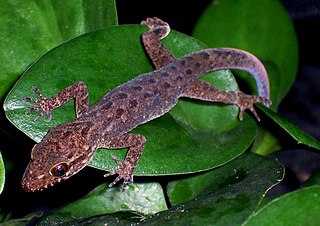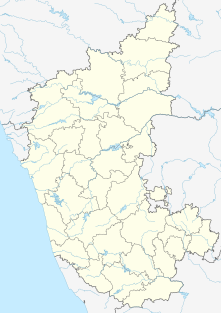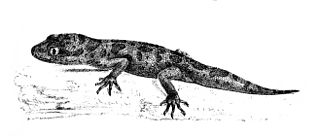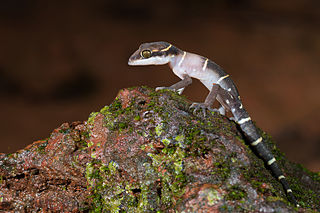
The Western Ghats, also known as Sahyadri, are a mountain range that covers an area of 140,000 square kilometres (54,000 sq mi) in a stretch of 1,600 kilometres (990 mi) parallel to the western coast of the Indian peninsula, traversing the states of Kerala, Tamil Nadu, Karnataka, Goa, Maharashtra and Gujarat. It is a UNESCO World Heritage Site and is one of the eight "hottest hot-spots" of biological diversity in the world. It is sometimes called the Great Escarpment of India. It contains a large proportion of the country's flora and fauna, many of which are only found in India and nowhere else in the world. According to UNESCO, the Western Ghats are older than the Himalayas. They influence Indian monsoon weather patterns by intercepting the rain-laden monsoon winds that sweep in from the south-west during late summer. The range runs north to south along the western edge of the Deccan Plateau, and separates the plateau from a narrow coastal plain, called Konkan, along the Arabian Sea. A total of thirty-nine areas in the Western Ghats, including national parks, wildlife sanctuaries and reserve forests, were designated as world heritage sites in 2012 – twenty in Kerala, ten in Karnataka, five in Tamil Nadu and four in Maharashtra.

Hemiphyllodactylus is a genus of geckos ranging from India and China southward to Southeast Asia and Oceania. Species of Hemiphyllodactylus are commonly known as half leaf-fingered geckos. Many species are known as dwarf geckos or slender geckos.

Cnemaspis is a genus of diurnal (day) geckos found in Africa and Asia. With over 100 species, it is one of the most diverse genera of geckos.

Cyrtodactylus is a diverse genus of Asian geckos, commonly known as bent-toed geckos or bow-fingered geckos. It has at least 250 described species at present, which makes it the largest of all gecko genera.

The Eastern Ghats are a discontinuous range of mountains along India's eastern coast. The Eastern Ghats run from the northern Odisha through Andhra Pradesh to Tamil Nadu in the south passing some parts of Karnataka and in the Wayanad district of Kerala. They are eroded and cut through by four major rivers of peninsular India, viz. Godavari, Mahanadi, Krishna, and Kaveri.

The Biligirirangana Hills, commonly called BR Hills, is a hill range situated in south-eastern Karnataka, at its border with Tamil Nadu in South India. The area is called Biligiriranganatha Swamy Temple Wildlife Sanctuary or simply BRT Wildlife Sanctuary. It is a protected reserve under the Wildlife Protection Act of 1972. Being at the confluence of the Western Ghats and the Eastern Ghats, the sanctuary is home to eco-systems that are unique to both the mountain ranges. The site was declared a tiger reserve in January 2011 by the Karnataka government, a few months after approval from India's National Tiger Conservation Authority.

Collared Cat Snake, Boiga nuchalis is a species of nocturnal, tree-dwelling, rear-fanged colubrid snake endemic to southwestern India.
Cnemaspis otai, also known commonly as Ota's day gecko or the Vellore day gecko, is a species of lizard in the family Gekkonidae. The species is endemic to southeastern India.

Cyrtodactylus collegalensis, also known as the Kollegal ground gecko or forest spotted gecko, is a species of gecko found in and around Mysore hills, at the junction of the Western Ghats and the Eastern Ghats, in South India. Recent taxonomic works and genetic studies revealed that the formerly-supposed genus is actually a subgenus of the widespread genus Cyrtodactylus. It is often confused with the forest spotted gecko.

Cyrtodactylus deccanensis, also commonly known as Deccan ground gecko, Günther's Indian gecko, or the banded ground gecko, is a species of gecko found in the northern Western Ghats of India. It has been found from northern Maharashtra, with a habitat range possibly extending to southern Gujarat. Cyrtodactylus albofasciatus was previously considered conspefic with Cyrtodactylus deccanensis but is now accepted as a valid species.
The Jammu bent-toed gecko is a species of gecko, a lizard in the family Gekkonidae. The species is endemic to northern India.
Cyrtodactylus nebulosus, also known as the clouded Indian gecko, is a species of gecko found in India.

Cyrtodactylus jeyporensis, also known as the Jeypore Indian gecko, the Jeypore ground gecko, or the Patinghe Indian gecko, is a critically endangered species of gecko found in India, which was until recently considered extinct. Described from a single specimen in 1877, it was rediscovered in 2010 in the Eastern Ghats of Odisha state, India.

The scaly gecko is a species of nocturnal, terrestrial, insectivorous gecko found in South India and northern Sri Lanka. This species was first discovered in the coastal sand dunes of Ramanathapuram in Tamil Nadu. Subsequently, it was incorrectly identified and only recently, elaborate descriptions and molecular data are available, enabling a proper identification.
The Kolhapur day gecko is a species of gecko described from the hills in Kolhapur in Maharashtra, India.

Geckoella is a disputed genus of Gekkonidae endemic to India and Sri Lanka.

Malai Mahadeshwara Wildlife Sanctuary or Male Mahadeshwara Wildlife Sanctuary is a protected Wildlife sanctuary in the Eastern Ghats and is located in the state of Karnataka in India. It is named after the presiding deity "Lord Male Mahadeshwara" of the famed Malai Mahadeshwara Hills Temple located within the sanctuary. The sanctuary lies in the Chamarajanagar district of Karnataka. It is at a distance of 140 km (87 mi) from Mysuru and 210 km (130 mi) from Bengaluru.
The Rishi Valley geckoella is a species of nocturnal, terrestrial, insectivorous gecko that is endemic to India. This recently described species is named after the Rishi Valley School, and this is currently known from hills of the Eastern Ghats, in Chittoor district of Andhra Pradesh state.
The Bangalore geckoella is a species of nocturnal, terrestrial, gecko that is endemic to India. This recently described species is found in the Eastern Ghats and parts of hilly surrounding terrain, in Mysore plateau. It is recorded from the outskirts of the city of Bangalore and adjacent regions, along the borders of Karnataka and Tamil nadu states, in South India. It inhabits dense leaf-litter and under stones in forest floor, of mixed deciduous forest tracts in hill slopes. It is often confused with Cyrtodactylus collegalensis.
















